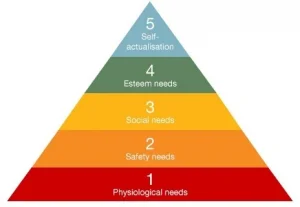One of the most common issues we work with is school-based anxiety. This has undoubtedly increased since Covid but there are lots of other factors too. The blame, responsibility and expectation are often put on the children and families which exacerbates the issue, but it is vital that schools and organisations provide appropriate support and accountability. We understand that there are limits, policies and procedures, but when the underlying causes are often related to trauma, attachment, additional need or mental health difficulties, the solutions are much more basic – relational not procedural.
From our experience, this is what is needed:
Listen – Everyone’s voice should be heard. Children and parents/carers need to be valued, not dismissed. They are the real experts in their own situation. Taking all information into account can help make effective change. What are the individual issues and views? How can these be considered? How can they make the situation better? What can school staff or other professional contribute?
Observe – What can you see? What is it telling you? Behaviour and action (or none) is a form of communication. Not one to be punished, but one to be understood. Are there additional needs? Is something being missed? What situations cause particular problems? What works well and can be implemented elsewhere?
Communicate – When we listen and understand, we can communicate effectively. Respectful and clear communication at the earliest opportunity prevents issues escalating and high levels of stress. Sharing information, identifying issues, discussing strategies are all key. How does each child communicate best? What do they need? How can this be communicated between families and school? Can other organisations or options help?
Understand – For young people, this isn’t a ‘phase’, or them being deliberately difficult, it is a genuine fear. What is contributing to it? What needs to change? For parents and carers, this isn’t a situation they want to be in, it can be incredibly stressful, supporting them will in turn support the child. Imposing views, demands, systems and being inflexible won’t solve the problem – it will probably cause more damage. Lack of understanding and empathy from schools are the biggest barriers we hear about.
Maslow’s Hierarchy of Needs is a simple way to understand what is happening. If a young person is focusing on survival, not feeling safe and secure (Level 2) or feeling that they don’t belong or have positive relationships (Level 3), how can they be expected to engage in learning effectively and work towards their future (Level 4 and 5).

Strengths-Focus – What is going well? What are the young person’s strengths? How can this be used to benefit them? Could it be a particular lesson/teacher/activity/skill? What works or has worked well in school? For example, if there’s a particular staff member they feel comfortable with, why is that? What information can they share with others? What strategies have they tried that have worked. Change the focus from “What’s wrong with you” to “What has gone well”, for example. We hear so much about behaviour systems and punishments. The fear this creates is incredible and the focus on “Not being good enough” feeds into the vicious circle.
Anybody experiencing anxiety needs to feel safe. For young people, schools can present immense and debilitating risk. We hear about the difference the encouraging, compassionate, understanding staff make. They focus on relationships and seeing beyond the ‘behaviour’. Safety involves everyone working together.
Information is available for schools:
Talking about anxiety in schools and colleges
Addressing emotionally-based school avoidance
And parents:
School Anxiety and Refusal | Parent Guide to Support | YoungMinds
Not Fine In School – School Attendance Difficulties | Facebook



